
Wine Culture and Information since 2002 - Volume 22
 Wine Culture and Information since 2002 - Volume 22 |
|
Issue 62, April 2008 |
Contents |
|
|
Wine and Internet |
|
The world of communication has drastically changed in the course of the last ten years. Once was the printed paper to play the main role in the spreading of information and news, then with the invention of radio and, later, of television, communication changed even more drastically. Information could be spread very quickly and every time it was necessary, therefore eliminating the technical times needed for the “production” of printed documents. In recent times a revolution has farther changed the world of communication, by introducing a new way and allowing many - including the ones who do not directly work in the world of communication - to spread and let other know his or her thoughts, quickly and with no bonds. Of course we are talking about Internet, a mean - or better to say, the widest computer network of the planet - which in very few years has literally revolutionized communication and the possibilities of communication among people. Originated from the ARPANET project, the computer network developed in 1969 and financed by the Defense Department of the United States of America, the name Internet was used for the first time in 1975, in a technical document in which was defined its primary communication protocol. Initially used for the exchange of files, electronic mail and other information, Internet began its spreading with the development of World Wide Web, WWW in short. This system, based on the HTTP protocol (HyperText Transfer Protocol) created in 1991 by Tim Berners-Lee at CERN of Geneva, allows the exchange of hyper-textual documents, as well as other types of documents, including pictures and sounds, while allowing to “surf” - or better to say, the linking - among documents. During that time personal computers began to become common, therefore contributing to a wide spreading both of Internet and of World Wide Web, introducing in the lives of people, or at least in the lives of those living in the so called industrialized countries, this new communication system. Internet has now become part of the world of wine. Despite the initial skepticism of producers who recognized to this communication system a lower dignity and efficiency than “traditional” ones, today the world of wine sees in Internet one of the most efficient ways for the spreading of information. The reasons are rather simple and it is thanks to the specific characteristics Internet can offer as opposed to traditional press and other communication systems. In this way news and information can be spread quickly and worldwide, also offering to readers a new way of interaction. Also wine producers begin to see in Internet an essential way for the promotion of their wines and their image: whether in the past most of wineries' WEB sites could be defined as “essential”, today there are many who invest on this communication system, in many cases also creating WEB portals. The advantages offered by Internet are obvious: lower financial investments than other communication media, the possibility of virtually reaching every place of the world, promptness in communication and in updating documents. These advantages are available not only to wine producers, but also to everyone working on wine information, as in our case. Results speak on themselves. Today DiWineTaste counts an average number of 135,000 monthly readers worldwide, a results which would have required huge resources - and not only of economic nature - in case we would have used other means, such as traditional press. As far as we are concerned, not only Internet allows us to offer to our readers a monthly magazine and other information columns - such as Wine Guide - it also allows us to offer other tools for interacting with our magazine, such as EnoGames, alcohol test and polls. The importance of Internet in the world of wine seems also to be confirmed by consumers and by the lovers of the beverage of Bacchus. According to our polls, more than 26% of our readers believe Internet is the most important communication mean in choosing a wine. The first ranking is occupied by events and occasions in which it is possible to personally taste a wine - preferred by more than 39% of our readers - a result confirmed, for example, by the success of our enogastronomical events, attended by a good number of participants among our readers and friends. Traditional communication and promotion means occupy the last rankings: traditional magazines are preferred by 6% of our readers only, whereas advertising has 2% of preferences only. In fact, if we do search the Internet about the subject of wine by using one of the many search engines, the information which can be obtained from the net are virtually endless. The information spread on the Internet certainly is more easy and immediate, an universe of information and news spread in a way practically unthinkable for other communication means. Result of the progress which has always accompanied the evolution of man and which inevitably characterizes his development, his culture and his life. After all, also the invention of press was a real revolution which radically changed the way in which men were communicating their thoughts to other men. While we recognize the high value of the invention of press, we believe the same value must be recognized to the communication spread on the Internet - most of the times free and freed from ideological bonds and of part - a new sign of the progress of man and the spreading of his thought. In this sense, we believe it has the same value and the same dignity of any other mean, with the advantage, maybe, of being more genuine and authentic.
|
||||
Comparing Sforzato di ValtellinaFrom the Nebbiolo grape, one of the best expressions of Valtellina's enology, a great wine rich and intense of deep emotions and impeccable class |
|
Nebbiolo is one of the many grapes of the Italian wine scene which has gone outside the borders of the country bringing the excellence of Italian wine in the world. Capable of making wines of full body and elegant class, Nebbiolo is frequently defined as an iron fist in a velvety glove. This definition is in fact pretty appropriate for wines produced with Nebbiolo, wines which after the initial impact caused by their remarkable structure followed by an evident crispness, amaze senses with their undeniable class and elegance. Two are the areas in which Nebbiolo wines are being produced: Piedmont - in particular the Langhe area - and Valtellina in Lombardy. Two territories very different one from each other with distinct climate and environmental characteristics and from which are produced two interesting expressions of Nebbiolo wines. Nebbiolo is a grape which tends to ripe later than other varieties, in that period of the autumn in which in the Langhe area arrives the fog (nebbia in Italian), an event which probably has inspired the name of the grape. Three are the main qualities characterizing Nebbiolo grape. First of all, its high contents in polyphenols and tannins - it is among the red berried grapes with the highest content in these substances - high acidity and moderate coloring quality. Despite its remarkable body, and which would make one thinks about wines with deep and intense colors and a very low transparency, wines produced with Nebbiolo are generally characterized by a moderate transparency and colors having garnet red colors, as well as brick red, also after few years of aging. A grape difficult to cultivate and to vinify, the production of great wines with Nebbiolo is a wine making practice requiring lots of efforts as well as using very high quality procedures, and - of course - a territory suited for its cultivation.
|
|
In Valtellina Nebbiolo is considered as an autochthonous grape and, despite today in this area it is preferred to call it with its most famous name, in the past it was known as Chiavennasca, a name still used today by some producers. In Valtellina, where the environmental conditions and the morphology of the territory, rich in mountains and steep slopes forcing a pretty hard viticulture, Nebbiolo grape is found in every traditional wine of the area, in which is sometimes added Pignola, Rossola and Brugnola. Undisputed celebrity of Valtellina is Sforzato. This excellent wine is produced by allowing grapes to dry before being crushed and vinified. This procedure allows a loss of water and a concentration of sugar, with the result of obtaining an intense wine and a robust structure. Sforzato di Valtellina is characterized by strong and complex aromas, qualities which become even stronger after some years of aging, a factor which, besides the other things, smooths the astringency of Nebbiolo while making it excellently round and balanced.
In our comparative tasting we will examine three excellent Sforzato di Valtellina, all of them being produced with 100% Nebbiolo, with the only difference in the period and type of container used for aging. Two of these wines have been aged in barrique and only one of them has been aged in cask. The first wine selected for our comparative tasting is Conti Sertoli Salis' Sforzato di Valtellina Canua, aged for 2 years in barrique. The second wine is Triacca's Sforzato di Valtellina San Domenico, the only one of the three to be aged in cask for a period of 18 months. The last wine of our comparative tasting is Mamete Prevostini's Sforzato di Valtellina Albareda, aged for 20 months in barrique. The wines will be of the latest available vintage and served at the temperature of 18° C. (64° F). As usual, the wines will be poured in three ISO tasting glasses.
|
||||||||
|
Wines produced with Nebbiolo grape are generally characterized by a moderate transparency, however showing pretty bright and brilliant colors. Nebbiolo does not have a high coloring property, a characteristic which is found in most of the wines produced with this grape. Sforzato di Valtellina represents an exception to this characteristic. The drying of grapes gives in fact a higher concentration of colors, therefore the transparency in Sforzato can sometimes be pretty low. The color generally observed in Sforzato della Valtellina is a pretty intense and brilliant ruby red, with nuances of garnet red also in the first years of aging. As time and aging go by, the color in Sforzato becomes garnet red and in the nuances can be observed a brick red color, a characteristic that in some Sforzatos is visible also after few years of aging. We will begin the appearance evaluation of our wines from Conti Sertoli Salis' Sforzato di Valtellina Canua. We will examine the color of this wine by tilting the glass over a white surface - for example a sheet of paper or a napkin - and by observing the wine at the base of the glass. It will be observed a brilliant ruby red color and a moderate transparency. Nuances - observed at the edge of the liquid mass towards the opening of the glass - will be characterized by a brick red color. Let's now pass to the evaluation of the second wine: Triacca's Sforzato di Valtellina San Domenico. The color of this wine is intense ruby red, darker than the previous wine, with brick red nuances. It should be noticed how the transparency in this wine is similar to the previous one. The evaluation of the third wine, Mamete Prevostini's Sforzato di Valtellina Albareda, will show a brilliant ruby red color and nuances of brick red. Also in this case transparency is pretty high, similar to what has been observed in the previous wines.
|
|
Thanks to its characteristics, to its capability of standing to long periods of aging and to the wine making techniques usually adopted with this grape, wines produced with Nebbiolo are generally generous according to an olfactory point of view, giving to the nose aromas of fruits and flowers as well as a pretty complex tertiary profile. Complexity is increased in Sforzato di Valtellina also thanks to the practice of the drying of grapes, a technique which concentrates the substances found in the berries, including aromas. The main fruit aromas which can be perceived in Sforzato are cherry, raspberry, plum, blueberry and strawberry, also in the form of jam, and sometimes blackberry. The world of flowers in Sforzato gives the nose aromas of violet and rose, both being very characteristic in Nebbiolo. Rich is also the group of spicy and tertiary aromas, such as licorice, vanilla, mace, leather, chocolate, cocoa, tobacco, cinnamon, menthol and, after some years of aging, from the glass can also be perceived a hint of tar. The wine from which we will begin the evaluation of aromas is Conti Sertoli Salis' Sforzato di Valtellina Canua. By holding the glass in vertical position and without swirling, we will do a first smell in order to evaluate opening aromas, that is the aromas made from “light” aromatic substances. From the glass it will be possible the perception of the aromas of cherry, dried violet and prune, three aromatic qualities very typical in Sforzato and in wines produced with Nebbiolo grape. We will now proceed with the swirling of the glass in order to favor the volatilization of “heavy” aromatic substances, therefore completing the olfactory profile of the first wine of our comparative tasting. From the glass will be perceived aromas of dried rose, pink pepper, vanilla, tobacco, star anise, cinnamon, cocoa, licorice, mace, leather and a pleasing balsamic hint of menthol. Let's now pass to the evaluation of the second wine of our comparative tasting, Triacca's Sforzato di Valtellina San Domenico. By holding the glass in vertical position and without swirling, we will proceed with the evaluation of opening aromas in which will be perceived cherry, plum and violet, not so different from the previous wine. After having swirled the glass, the olfactory profile of this wine will be completed by aromas of blackberry, blueberry, raspberry, cyclamen and dried rose followed by the more complex aromas of vanilla, tobacco, chocolate, cinnamon, leather and menthol. Let's now proceed with the evaluation of the last wine: Mamete Prevostini's Sforzato di Valtellina Albareda. The opening of this Sforzato is characterized by aromas of cherry, violet and plum to which follow the complex aroma of leather. After having swirled the glass, the olfactory profile will be completed by rose, raspberry, vanilla, tobacco, cocoa, cinnamon, clover, licorice, mace, cinchona and the usual balsamic hint of menthol. Finally, it is interesting to compare the impact of the different types of casks and the aging period on the aromatic profile of each wine.
|
||||
|
An iron fist in a velvety glove. This is how are generally defined wines produced with Nebbiolo because of their remarkable structure and astringency which is added to the elegance and class, while showing a refreshing crispness, pretty unusual to be found in a red wine. Nebbiolo is in fact one of the red berried grapes having the highest content in polyphenols, a characteristic which is always found in its wines and expressed by an evident astringency. In order to smooth Nebbiolo's harshness, wines are allowed to age for many months, sometimes for many years, in casks - as well as barriques - a procedure which will increase both body and roundness. In Sforzato roundness is also increased by the drying of grapes, a quality which makes this wine unique in the group of wines made with Nebbiolo grape. Another characteristic of Sforzato is the high content in alcohol, result of the concentration of sugar during the drying of gapes and useful for balancing the wine, which can sometimes be 15%. The first wine of which we will examine taste is Conti Sertoli Salis' Sforzato di Valtellina Canua. In the attack of this Sforzato is very clear the nature of this excellent wine from Valtellina: a tannic attack supported by an appreciable crispness, remarkable structure and a pleasing roundness. It should also be noticed how the alcohol contributes to the balancing of astringency and acidity. Also the attack of the second wine - Triacca's Sforzato di Valtellina San Domenico - is not so different from the previous wine: astringency and crispness well balanced by a pleasing roundness and by alcohol. Also in this case the structure is evidently robust. Let's now pass to the last wine of our comparative tasting: Mamete Prevostini's Sforzato di Valtellina Albareda. Once again, it will be noticed a tannic attack supported by a pleasing crispness, well balanced by alcohol and roundness. It should be noticed the excellent correspondence to the nose in all the three wines, in particular cherry and plum.
|
|
One of the many excellent qualities of Sforzato di Valtellina is represented by the long persistence which can be perceived in the mouth after having swallowed the wine, as in the case of our three wines. The finish of Conti Sertoli Salis' Sforzato di Valtellina Canua is very persistent and leaving in the mouth intense and clean flavors of cherry and plum, very characteristic in wines produced with Nebbiolo. Also the finish of Triacca's Sforzato di Valtellina San Domenico is very persistent with long and intense flavors of cherry, plum and blackberry, very agreeable. Very similar is the the finish of the third wine - Mamete Prevostini's Sforzato di Valtellina Albareda - characterized by a very long persistence with intense, clean and pleasing flavors of cherry, plum and raspberry. It should also be noticed how the robust body and crispness continue to be perceived after having swallowed the wine.
|
Wines of the Month |
|
|
|
Score legend Prices are to be considered as indicative. Prices may vary according to the country or the shop where wines are bought |
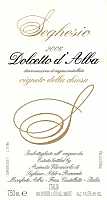
|
|
Barbera d'Alba Vigneto della Chiesa 2004 |
|
| Seghesio (Piedmont, Italy) | |
| Grapes: Barbera | |
| Price: € 17.00 | Score: |
| Dolcetto d'Alba Vigneto della Chiesa shows an intense ruby red color and nuances of purple red, little transparency. The nose reveals intense, clean pleasing and refined aromas that start with hints of cherry, plum and blueberry followed by aromas of violet, raspberry, blackberry, cyclamen, almond and carob. The mouth has good correspondence to the nose, a slightly tannic attack and however balanced by alcohol, good body, intense flavors, agreeable. The finish is persistent with flavors of cherry and plum. Dolcetto d'Alba Vigneto della Chiesa ages for 9 months in steel tanks. | |
| Food Match: Stuffed pasta with mushrooms, Sauteed meat, Stewed meat with mushrooms | |
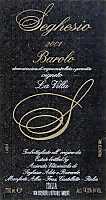
|
|
Barolo Vigneto la Villa 2001 |
|
| Seghesio (Piedmont, Italy) | |
| Grapes: Nebbiolo | |
| Price: € 36.00 | Score: |
| Barolo Vigneto la Villa shows a brilliant ruby red colors and nuances of brick red, moderate transparency. The nose reveals intense, clean, pleasing, refined and elegant aromas which start with hints of cherry macerated in alcohol, raspberry and violet followed by aromas of plum, strawberry, vanilla, tobacco, licorice, cinnamon, chocolate, clover, leather and menthol. The mouth has good correspondence to the nose, a tannic attack and pleasing crispness, however balanced by alcohol, full body, intense flavors, agreeable. The finish is persistent with flavors of cherry, plum and raspberry. A well made wine. Barolo Vigneto la Villa ages for 24 months in barrique. | |
| Food Match: Game, Roasted meat, Braised and stewed meat, Hard cheese | |
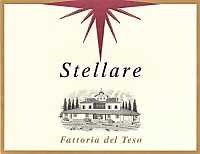
|
|
Stellare 2003 |
|
| Fattoria del Teso (Tuscany, Italy) | |
| Grapes: Syrah | |
| Price: € 8.00 | Score: |
| Stellare shows an intense ruby red color and nuances of garnet red, little transparency. The nose reveals intense, clean, pleasing and refined aromas that start with hints of black cherry, plum and black currant followed by aromas of violet, vanilla, tobacco, chocolate, black pepper and eucalyptus. The mouth has good correspondence to the nose, a tannic attack and however balanced by alcohol, good body, intense flavors, pleasing roundness. The finish is persistent with flavors of black cherry, plum and black currant. Stellare ages for 12 months in barrique followed by 4 months of aging in bottle. | |
| Food Match: Roasted meat, Broiled meat and barbecue, Stewed and braised meat with mushrooms, Hard cheese | |
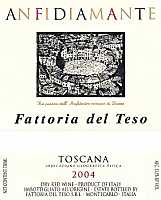
|
|
Anfidiamante 2004 |
|
| Fattoria del Teso (Tuscany, Italy) | |
| Grapes: Sangiovese, Syrah, Merlot, Cabernet Sauvignon | |
| Price: € 18.00 | Score: |
| Anfidiamante shows an intense ruby red color and nuances of ruby red, little transparency. The nose reveals intense, clean, pleasing and refined aromas that start with hints of black cherry, plum and black currant followed by aromas of blueberry, violet, vanilla, chocolate, tobacco, eucalyptus and mace. The mouth has good correspondence to the nose, a tannic attack and however balanced by alcohol, good body, intense flavors, agreeable. The finish is persistent with flavors of black cherry and plum. Anfidiamante ferments in barrique and ages for 12 months in bottle. | |
| Food Match: Roasted meat, Stewed and braised meat, Hard cheese | |
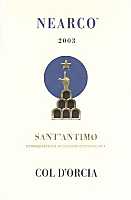
|
|
Sant'Antimo Rosso Nearco 2003 |
|
| Col d'Orcia (Tuscany, Italy) | |
| Grapes: Merlot (50%), Cabernet Sauvignon (30%), Syrah (20%) | |
| Price: € 25.00 | Score: |
| Sant'Antimo Rosso Nearco shows an intense ruby red color and nuances of garnet red, little transparency. The nose reveals intense, clean, pleasing and refined aromas that start with hints of black cherry, plum and black currant followed by aromas of tobacco, vanilla, blackberry, chocolate, eucalyptus, mace, black pepper and coffee. The mouth has good correspondence to the nose, a tannic attack and however balanced by alcohol, full body, intense flavors, agreeable. The finish is persistent with flavors of black cherry, plum and black currant. Sant'Antimo Rosso Nearco ages for 18 months in barrique followed by more than 12 months of aging in bottle. | |
| Food Match: Game, Roasted meat, Stewed and braised meat, Hard cheese | |
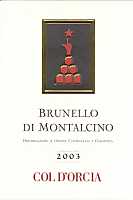
|
|
Brunello di Montalcino 2003 |
|
| Col d'Orcia (Tuscany, Italy) | |
| Grapes: Sangiovese | |
| Price: € 27.00 | Score: |
| This Brunello di Montalcino shows an intense ruby red color and nuances of garnet red, moderate transparency. The nose reveals intense, clean, pleasing, refined and elegant aromas which start with hints of black cherry, plum and violet followed by aromas of blueberry, vanilla, tobacco, licorice, chocolate, coffee, menthol and pink pepper. The mouth has good correspondence to the nose, a tannic attack and pleasing crispness, however balanced by alcohol, full body, intense flavors, agreeable. The finish is persistent with flavors of black cherry, plum and blueberry. A well made wine. This Brunello di Montalcino ages for 24 months in barrique followed by at least 8 months of aging in bottle. | |
| Food Match: Game, Roasted meat, Braised and stewed meat, Hard cheese | |

|
|
Stringaio 2005 |
|
| Fattoria La Torre (Tuscany, Italy) | |
| Grapes: Syrah (70%), Cabernet Sauvignon (30%) | |
| Price: € 12.00 | Score: |
| Stringaio shows an intense ruby red color and nuances of ruby red, little transparency. The nose reveals intense, clean, pleasing and refined aromas which start with hints of black cherry, plum and violet followed by aromas of blackberry, black currant, vanilla, tobacco, black pepper, chocolate and toffee. The mouth has good correspondence to the nose, a tannic attack and however balanced by alcohol, good body, intense flavors, agreeable. The finish is persistent with flavors of black cherry, plum and black currant. Stringaio ages for 12 months in barrique. | |
| Food Match: Roasted meat, Stewed meat with mushrooms, Hard cheese | |
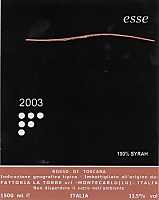
|
|
Esse 2003 |
|
| Fattoria La Torre (Tuscany, Italy) | |
| Grapes: Syrah | |
| Price: € 38.00 | Score: |
| Esse shows an intense ruby red color and nuances of garnet red, little transparency. The nose reveals intense, clean, pleasing, refined and elegant aromas which start with hints of black cherry, plum and black currant followed by aromas of blueberry, vanilla, tobacco, black pepper, chocolate, licorice, leather, eucalyptus and mace. The mouth has good correspondence to the nose, a tannic attack and however balanced by alcohol, full body, intense flavors, agreeable. The finish is persistent with flavors of black cherry, plum and black currant. Esse ages for 18 months in barrique followed by 6 months of aging in bottle. | |
| Food Match: Game, Roasted meat, Braised and stewed meat, Hard cheese | |
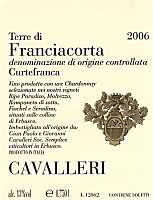
|
|
Terre di Franciacorta Bianco 2006 |
|
| Cavalleri (Lombardy, Italy) | |
| Grapes: Chardonnay | |
| Price: € 10.00 | Score: |
| Terre di Franciacorta Bianco shows a brilliant greenish yellow color and nuances of greenish yellow, very transparent. The nose denotes intense, clean and pleasing aromas which start with hints of apple, pear and banana followed by aromas of hawthorn, citrus fruits and plum. The mouth has good correspondence to the nose, a crisp attack and however balanced by alcohol, good body, intense flavors. The finish is persistent with flavors of apple, pear and banana. This wine ages in steel tanks. | |
| Food Match: Fried fish, Pasta and risotto with fish and crustaceans, Sauteed fish | |
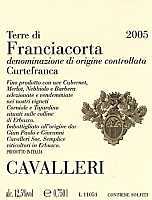
|
|
Terre di Franciacorta Rosso 2006 |
|
| Cavalleri (Lombardy, Italy) | |
| Grapes: Merlot (40%), Cabernet Sauvignon (25%), Cabernet Franc (15%), Barbera (10%), Nebbiolo (10%) | |
| Price: € 10.00 | Score: |
| This wine shows a brilliant ruby red color and nuances of garnet red, moderate transparency. The nose denotes intense, clean and pleasing aromas that start with hints of cherry, raspberry and plum followed by aromas of strawberry, cyclamen, tobacco and vanilla. The mouth has good correspondence to the nose, a slightly tannic attack and pleasing crispness, however balanced by alcohol, good body, intense flavors. The finish is persistent with flavors of cherry, raspberry and plum. Terre di Franciacorta Rosso ages for about 12 months in cask. | |
| Food Match: Stuffed pasta, Stewed meat with mushrooms, Broiled meat and barbecue | |
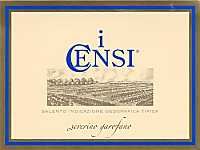
|
|
I Censi 2003 |
|
| Masseria Monaci (Apulia, Italy) | |
| Grapes: Negroamaro, Primitivo | |
| Price: € 7.30 | Score: |
| This wine shows an intense ruby red color and nuances of garnet red, moderate transparency. The nose denotes intense, clean, pleasing and refined aromas that start with hints of black cherry, plum and violet followed by aromas of blackberry, carob, star anise and tobacco. The mouth has good correspondence to the nose, a slightly tannic attack and however balanced by alcohol, good body, intense flavors. The finish is persistent with flavors of black cherry, plum and blackberry. | |
| Food Match: Stuffed pasta, Sauteed meat with mushrooms | |
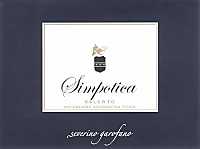
|
|
Simpotica 2003 |
|
| Masseria Monaci (Apulia Italy) | |
| Grapes: Negroamaro, Malvasia Nera, Montepulciano | |
| Price: € 9.00 | Score: |
| Simpotica shows an intense ruby red color and nuances of garnet red, moderate transparency. The nose denotes intense, clean, pleasing and refined aromas that start with hints of black cherry and plum followed by aromas of blackberry, dried violet, vanilla, tobacco, coffee, carob and menthol. The mouth has good correspondence to the nose, a tannic attack and however balanced by alcohol, good body, intense flavors. The finish is persistent with flavors of plum, black cherry and blackberry. | |
| Food Match: Roasted meat, Braised and stewed meat, Hard cheese | |
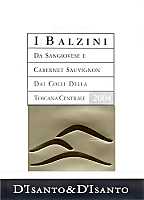
|
|
I Balzini White Label 2004 |
|
| I Balzini (Tuscany, Italy) | |
| Grapes: Sangiovese (50%), Cabernet Sauvignon (50%) | |
| Price: € 13.50 | Score: |
| I Balzini White Label shows an intense ruby red color and nuances of ruby red, little transparency. The nose denotes intense, clean, pleasing and refined aromas which start with hints of black cherry, plum and violet followed by aromas of blueberry, vanilla, carob, cinnamon, mace, tobacco and menthol. The mouth has good correspondence to the nose, a tannic attack and however balanced by alcohol, good body, intense flavors. The finish is persistent with flavors of black cherry and plum. I Balzini White Label ages for 12 months in barrique followed by at least 12 months of aging in bottle. | |
| Food Match: Broiled meat and barbecue, Roasted meat, Stewed meat with mushrooms, Hard cheese | |
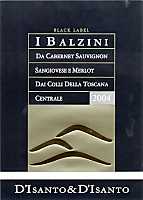
|
|
I Balzini Black Label 2004 |
|
| I Balzini (Tuscany, Italy) | |
| Grapes: Cabernet Sauvignon (50%), Sangiovese (25%), Merlot (25%) | |
| Price: € 24.00 | Score: |
| I Balzini Black Label shows a brilliant ruby red color and nuances of ruby red, little transparency. The nose reveals intense, clean, pleasing and refined aromas which start with hints of black cherry, plum and black currant followed by aromas of violet, blueberry, vanilla, tobacco, cocoa, cinnamon, mace and eucalyptus. The mouth has good correspondence to the nose, a tannic attack and however balanced by alcohol, good body, intense flavors, agreeable. The finish is persistent with flavors of black cherry, plum and black currant. I Balzini Black Label ages for about 16 months in barrique followed by at least 12 months of aging in bottle. | |
| Food Match: Roasted meat, Braised and stewed meat with mushrooms, Hard cheese | |
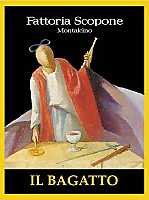
|
|
Il Bagatto 2003 |
|
| Fattoria Scopone (Tuscany, Italy) | |
| Grapes: Cabernet Sauvignon (40%), Merlot (40%), Sangiovese (10%), Petit Verdot (10%) | |
| Price: € 20.00 | Score: |
| Il Bagatto shows an intense ruby red color and nuances of ruby red, little transparency. The nose reveals intense, clean, pleasing and refined aromas that start with hints of black cherry, plum and black currant followed by aromas of violet, vanilla, tobacco, chocolate, cumin, rhubarb and eucalyptus. The mouth has good correspondence to the nose, a tannic attack and however balanced by alcohol, good body, intense flavors. The finish is persistent with flavors of black cherry, plum and black currant. Il Bagatto ages for 20 months in barrique followed by 12 months of aging in bottle. | |
| Food Match: Roasted meat, Stewed and braised meat with mushrooms, Hard cheese | |
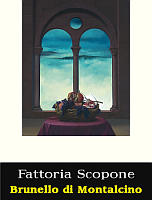
|
|
Brunello di Montalcino 2003 |
|
| Fattoria Scopone (Tuscany, Italy) | |
| Grapes: Sangiovese Grosso | |
| Price: € 25.00 | Score: |
| This Brunello di Montalcino shows an intense ruby red color and nuances of garnet red, moderate transparency. The nose reveals intense, clean, pleasing, refined and elegant aromas which start with hints of black cherry, plum and violet followed by aromas of blueberry, vanilla, tobacco, licorice, chocolate, coffee, menthol and pink pepper. The mouth has good correspondence to the nose, a tannic attack and pleasing crispness, however balanced by alcohol, full body, intense flavors, agreeable. The finish is persistent with flavors of black cherry, plum and blueberry. A well made wine. This Brunello di Montalcino ages for 24 months in barrique followed by at least 8 months of aging in bottle. | |
| Food Match: Game, Roasted meat, Braised and stewed meat, Hard cheese | |
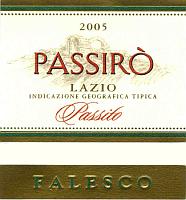
|
|
Passirò 2005 |
|
| Falesco (Latium, Italy) | |
| Grapes: Roscetto | |
| Price: € 10.00 - 385ml | Score: |
| Passirò shows a pale golden yellow color and nuances of amber yellow, transparent. The nose denotes intense, clean, pleasing and refined aromas which start with hints of dried apricot, peach jam and pear followed by aromas of almond, honey, vanilla, candied fruits, date, citrus peel and saffron. The mouth has good correspondence to the nose, a sweet attack and pleasing roundness, however balanced by alcohol, good body, intense flavors. The finish is persistent with flavors of dried apricot, honey and almond. Passirò ages in cask for 12 months. | |
| Food Match: Fruit tarts, Confectionery | |
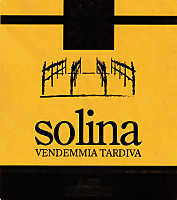
|
|
Solina 2005 |
|
| Cincinnato (Latium, Italy) | |
| Grapes: Malvasia del Lazio | |
| Price: € 16.00 - 500ml | Score: |
| Solina shows a deep golden yellow color and nuances of golden yellow, transparent. The nose denotes intense, clean, pleasing and refined aromas that start with hints of honey, almond and vanilla followed by aromas of date, dried fig, peach jam and nail polish. The mouth has good correspondence to the nose, a sweet attack and pleasing roundness, however balanced by alcohol, good body, intense flavors. The finish is persistent with flavors of dried fig, honey and almond. Solina is made from late harvested grapes and ages for 12 months in cask. | |
| Food Match: Fruit tarts, Confectionery | |
News |
|
In this section are published news and information about events concerning the world of wine and food. Whoever is interested in publishing this kind of information can send us a mail to our address.
|
CarrotCarrot is one of the most common vegetables, rich in Vitamin A, B, C and betacarotene, useful for sunbathing, strengthening teeth and bones, reinforces the immunitary system and offers a good protection against cancer |
|
Carrot, according to binomial nomenclature called “Daucus carota”, is a herbaceous plant belonging to the family of umbelliferae is also one of the most common vegetables. Its name derives from the Greek Karotˇn and grows both wild or cultivated, however wild carrot has a hard root which is not edible. Carrot is common in Europe, Asia and Northern Africa and from its seeds, having digestive and aperitif properties, is obtained an oil used by the industry of liquors and cosmetics. Carrot is a plant reaching one meter (3 feet) in height, with white flowers having five petals, grouped in umbels and a long orange root. It blossoms from May to December and the edible part is the root. There are about sixty different varieties of carrots in the world.
|
|
Carrot comes from South Eastern Europe and from Western Asia, whereas according others, it comes from the Himalayan area of Afghanistan and Hindu Kush. There are few information about the history of the plant, however it is known Greeks and Romans cultivated the plant for the extraction of medicinal substances. In the first century after Christ, it was known by Romans; it is in fact depicted in some frescoes at Pompeii and Pliny praises its cicatrizant and diuretic properties as well as for its stimulatory effects on stomach. Crunchy carrots, tender and of an appealing orange color, rich in vitamin A that we are used to see today are not the same found at the times of our ancestors. During Roman times carrots were thin and knotty, with a harsh taste and a whitish heart, the color was basically purple and it was, according to what our ancestors wrote, “as hard as a stone”. It is not known the exact time in which carrots become a plant cultivated in gardens. It was mentioned in cookbooks of the Renaissance, in which were suggested a tisane of carrot flowers against epilepsy.
The properties of carrots are today well known, however this extraordinary vegetable has some qualities not known by everyone. The most known properties are the availability of vitamins, mainly vitamin A as well as B and C. Another well known substance is betacarotene, which improves sight and it is a fundamental component for the production of melanin, that is the substance responsible for the coloring of cells useful to the body for the protection against sun rays, or better to say, to what it is commonly known as “sun tan”. Betacarotene has other important properties besides giving the skin a pleasing color: it has other qualities, less known but however important. Betacarotene reinforces teeth and bones, it also increases immunitary defenses, and it is particularly effective in protecting the respiratory tract. Betacarotene defends the body from the development of cancer or, to make things simpler, offers a good protection against that group of factors and mechanisms which could develop cancer caused by chemical agents, while improving immunitary defense. Carrot is not the vegetable dedicated to the eyes and skin only. It plays and important role for the bowel too: the richness in fibers makes carrot, for adults, very useful in regulating the activities of bowel, whereas for kids it is a good remedy against diarrhea. Its vitamins are useful to anyone requiring a diet rich in these precious nutritional components, in particular for old people and convalescents. Its mineralizant properties have a role in the hair follicle, allowing hair to grow strong and in good health. Carrot is particularly useful against lung's diseases and dermatitis; it is good for protecting the mucosa of the mouth, nose, throat and lungs, while protecting the respiratory system from infections. It is also used as a good protection for the stomach, it is a good remedy against ulcer thanks to its cicatrizant and antiseptic properties. Carrot has other properties too, it is useful in protecting the skin against aging, invigorates liver and kidneys, can regulate cholesterol, helps diuresis and can relief eye irritations. Also mothers with newborn children can benefit from the properties of carrot as it facilitates the secretion of milk. Carrot is widely used in cooking and in medicine, the cosmetic industry widely uses the chemical characteristics of this plant. It is also used for its antioxidant, moisturizing, nutritional and corroborant properties, for stimulating sun tan, to prevent the formation of wrinkles and to remove impurities of the skin. A group of researchers of the University of Newcastle upon Tyne in Great Britain, has discovered in carrot a substance, a natural pesticide which reduces of one third the risk of cancer in laboratory rats. This substance is a compound contained in carrots, which protect them against diseases from fungi. Experts understood long time ago carrots had properties of protecting the body from cancer, however they were not successful in identifying the substance responsible of this precious property. In order to have good carrots, with a consistency and to develop its good organoleptic qualities, particular care must be paid to the soil in which they are planted into. The preferred soil for carrots is sandy, with no stones or pebbles, a soil in which the root can easily penetrate while ensuring a proper supply of water.
|
||||||||
|
Carrot is widely used in cooking and it a common ingredient in many recipes, such as purees, soups, juices, desserts and porridges. It is also used raw in salads, it is very good for making refreshing juices. Cut in sticks, in julienne, sliced or diced, carrots can enrich salads and sandwiches. At a temperature of 0° C (32° F) and a relative humidity of 90-95%, carrots can be kept for a long period, even many months, while keeping unaltered their organoleptic properties. Carrots keep their properties both when consumed raw or steamed: carotene is in fact resistant to the heat. Boiled carrots are a fundamental ingredient for stocks and soups, whereas sauteed or pan fried are precious ingredients for sauces and ragouts. Carrots are among the most used ingredients in cooking, they are found in first courses, such as soups, in second courses, such as stuffings and sauces, in side dishes, such as salads and purees, in desserts, such as biscuits, cookies, tarts and jams. Vitamin A is liposoluble therefore the body can absorb it better in case it is served with a condiment, such as extra-virgin olive oil. Despite its good properties, when consuming carrots it is good to pay attention about some important facts. It is not advisable to consume boiled carrots and left at room temperature for a long time as they develop nitrosamines, causing esophagus cancer. It is always suggested not to exceed in the consumption of vitamin A as this could cause a serious intoxication. Vitamins are classified according their solubility. Vitamins soluble in water (hydrosoluble) such as vitamin C, B1, B2 and B6, and the ones soluble in fats (liposoluble) such as vitamin A and D. Vitamin A is found in nature in the form of retinole, when it is of animal origin, or in the form of carotenoids, in case they have vegetal origin. The body can transform carotenoids (provitamins) into vitamin A. In case of excessive intake of hydrosoluble vitamins, they are eliminated by the body through the urinary system, liposoluble vitamins cannot be eliminated, therefore it is always advised not to consume them in excess. Average daily intake of vitamin A changes according to age: for kids and women 0.6 mg are enough, whereas for males from 15 years of age on, the quantity of vitamin A can reach 0,7 mg. It is however advised not to take more than 9 mg a day of retinole for men and 7.5 for women.
|
AquavitaeReview of Grappa, Distillates and Brandy |
|
|
| Distillates are rated according to DiWineTaste's evaluation method. Please see score legend in the "Wines of the Month" section. |
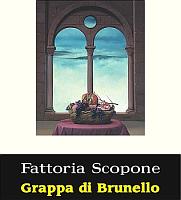
|
|
Grappa di Brunello |
|
| Fattoria Scopone (Tuscany, Italy) | |
| (Distiller: Distilleria Casimiro) | |
| Raw matter: Pomace of Sangiovese Grosso | |
| Price: € 25.00 - 50cl | Score: |
| This grappa is limpid, colorless and crystalline. The nose denotes intense, clean and pleasing aromas of black cherry, plum, violet, hazelnut, pear and licorice, with almost imperceptible alcohol pungency. In the mouth has intense flavors, with perceptible alcohol pungency and which tends to dissolve rapidly, good correspondence to the nose, balanced sweetness, pleasing roundness, agreeable. The finish is persistent with flavors of black cherry, plum and hazelnut. This grappa is distilled with a discontinuous bainmarie alembic still and ages for one year in steel tanks. | |
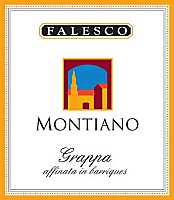
|
|
Grappa Montiano |
|
| Falesco (Umbria, Italy) | |
| (Distiller: Distillerie Berta) | |
| Raw matter: Pomace of Merlot | |
| Price: € 14.50 - 50cl | Score: |
| This grappa shows a pale amber yellow color, limpid and crystalline. The nose reveals intense, clean and pleasing aromas of dried fig, vanilla, prune, caramel, tobacco and honey, with almost imperceptible pungency. In the mouth has intense flavors, with perceptible alcohol pungency which tends to dissolve rapidly, good correspondence to the nose, balanced sweetness, pleasing roundness, agreeable. The finish is persistent with flavors of dried fig, prune and honey. This grappa is distilled with steam operated discontinuous alembic still and ages in barrique for 12 months. | |
Wine Parade |
|
|
| The best 15 wines according to DiWineTaste's readers. To express your best three wines send us an E-mail or fill in the form available at our WEB site. |
| Rank | Wine, Producer | |
|---|---|---|
| 1 |
| Barolo Bussia 2001, Prunotto (Italy) |
| 2 |
| Collio Bianco Col Dis˘re 2004, Russiz Superiore (Italy) |
| 3 |
| Bradisismo 2003, Inama (Italy) |
| 4 |
| Barolo Cannubi Boschis 2001, Sandrone (Italy) |
| 5 |
| San Leonardo 2001, Tenuta San Leonardo (Italy) |
| 6 |
| Amarone della Valpolicella Classico 2000, Zenato (Italy) |
| 7 |
| Sforzato di Valtellina Canua 2001, Conti Sertoli Salis (Italy) |
| 8 |
| Wine Obsession 2001, Vignamaggio (Italy) |
| 9 |
| Chianti Classico Riserva Novecento 2000, Dievole (Italy) |
| 10 |
| Soave Classico Monte Alto 2004, Ca' Rugate (Italy) |
| 11 |
| Blanc des Rosis 2006, Schiopetto (Italy) |
| 12 |
| Sagrantino di Montefalco Collepiano 2003, Arnaldo Caprai (Italy) |
| 13 |
| Sforzato di Valtellina San Domenico 2002, Triacca (Italy) |
| 14 |
| Amarone della Valpolicella Classico Costasera 2001, Masi (Italy) |
| 15 |
| Don Antonio 2003, Morgante (Italy) |
| |||||||
Privacy Policy | |||||||


| Copyright © 2002-2024 Antonello Biancalana, DiWineTaste - All rights reserved |
| All rights reserved under international copyright conventions. No part of this publication and of this WEB site may be
reproduced or utilized in any form or by any means, electronic or mechanical, without permission in writing from DiWineTaste. |